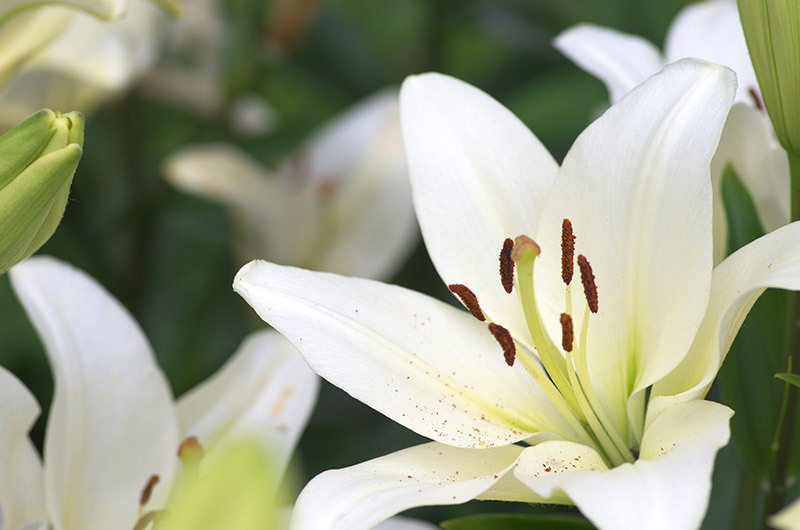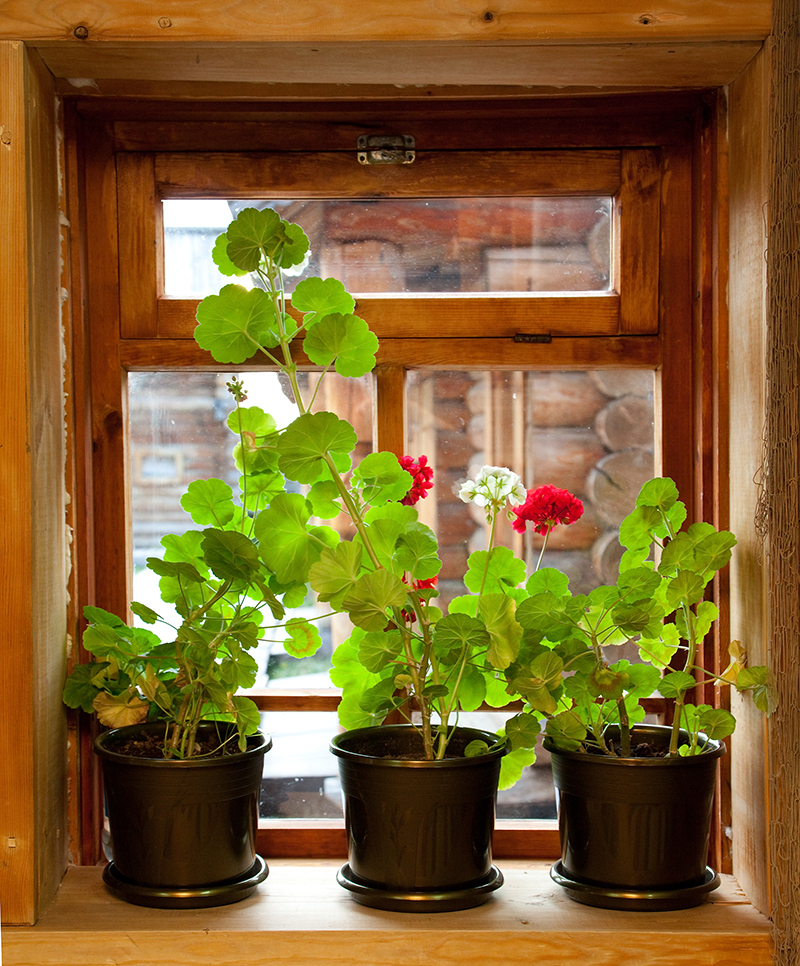Essential Tips for Thriving Hydrangeas: A Gardener's Guide
Posted on 14/08/2025
Essential Tips for Thriving Hydrangeas: A Gardener's Guide
Hydrangeas are beloved for their opulent blooms and versatile colors, making them a classic feature in gardens around the world. Whether you're an aspiring gardener or a seasoned horticulturist, achieving flourishing hydrangea plants can elevate your garden's beauty throughout the seasons. This comprehensive guide delves into expert methods and strategies to ensure your hydrangeas not only survive--but thrive, offering lush, vibrant blooms year after year.
Understanding Hydrangeas: Getting to Know Your Plants
Before diving into care routines, it's essential to grasp the uniqueness of hydrangeas. The different types, their growing habits, and their requirements are critical for success.
Types of Hydrangeas
Hydrangea varieties bring unique textures and colors. The most common garden hydrangea types include:
- Hydrangea macrophylla (Bigleaf hydrangea): Known for their mophead or lacecap flowers and the ability to change color based on soil pH.
- Hydrangea paniculata (PeeGee hydrangea): Features cone-shaped blooms, excellent cold tolerance, ideal for colder climates.
- Hydrangea arborescens (Smooth hydrangea): Robust, adaptable, with white flower heads (think 'Annabelle').
- Hydrangea quercifolia (Oakleaf hydrangea): Distinctive oak-shaped foliage with bold, conical blooms and spectacular fall color transitions.
- Hydrangea serrata: Delicate lacecap blooms, native to mountainous Japanese regions.
Tip: Always identify your hydrangea variety; care routines can differ significantly between types.

Optimal Planting: Setting the Stage for Success
Proper planting is the foundation of vibrant, long-lived hydrangea bushes. Consider these crucial factors for its thriving:
Choosing the Perfect Site
Location matters--hydrangeas appreciate the right balance of light and shade. Most hydrangeas favor:
- Morning sunlight with afternoon shade
- Sheltered spots that guard against harsh winds
- Areas with well-drained, rich soil
Pro tip: Avoid full sun all day, which can scorch leaves and fade blooms, especially for Bigleaf and Oakleaf hydrangeas.
Soil Preparation and Amendments
Rich, porous soil is essential. Hydrangeas do not tolerate waterlogged roots. For the best results:
- Incorporate plenty of organic matter (well-rotted compost, manure, or peat moss)
- Check soil drainage by digging a test hole and filling with water; if it empties in 2-3 hours, drainage is good
- Test soil pH (especially for color-changing varieties)
Hydrangeas thrive best in soils with moderate fertility and pH between 5.5 and 6.5.
When and How to Plant Hydrangeas
- Best time to plant: Early spring or autumn for optimal root establishment
- Dig a hole twice as wide as the root ball and equally deep
- Place the plant at the same soil level as it was in the pot; do not plant too deep
- Backfill with amended soil, firm gently, and water thoroughly
Watering Hydrangeas: The Key to Lush Growth
Moisture is vital, especially during the first season after planting and during bloom formation. However, consistency is the secret to avoiding root issues.
Hydration Best Practices
- Deep, infrequent watering--Encourage roots to grow deep; water 1-3 times weekly instead of shallow daily sprinkles.
- Monitor soil moisture by checking 2 inches beneath the surface; soil should feel damp but not soggy.
- Mulch generously--A 2-3 inch layer of organic mulch (like bark chips) conserves moisture and stabilizes temperature.
Note: Hydrangeas wilt quickly if thirsty but rebound rapidly with water; however, chronic drought will stunt blooms.
Fertilizing Hydrangeas: Nourishing for Vibrant Blooms
While hydrangeas are not heavy feeders, annual fertilization promotes balanced growth and robust flowering.
Choosing the Right Fertilizer
- Use a slow-release granular fertilizer formulated for flowering shrubs
- A balanced blend like 10-10-10 supports both foliage and bloom development
- Avoid high nitrogen fertilizers, which promote leafy growth at the expense of flowers
Expert tip: For color-changing hydrangeas (like Hydrangea macrophylla), fertilizer can also affect bloom color; acidifying or liming agents can be used as desired.
Fertilization Timing
- Apply just as new growth begins, usually in early spring
- For a second boost, apply a lighter dose in mid-summer, but never fertilize after August to avoid stimulating new growth before winter
Pruning Hydrangeas: Perfect Timing for Prolific Flowers
Pruning hydrangeas can be tricky but is crucial for shaping the plant and maximizing blooms. Understanding your hydrangea species is vital, as they require different pruning approaches.
Pruning by Hydrangea Type
- Bigleaf and Oakleaf Hydrangeas (Hydrangea macrophylla and quercifolia): Bloom on "old wood" (last year's growth). Prune right after flowering, removing dead or weak stems, not in spring, to avoid removing flower buds.
- PeeGee and Smooth Hydrangeas (Hydrangea paniculata and arborescens): Bloom on "new wood." Prune in late winter or early spring while dormant, cutting stems down by 1/3 for fuller growth.
Do not prune newly planted or young hydrangeas except to remove damaged stems.
Color-Changing Hydrangeas: Manipulating Bloom Colors
One of the most enchanting features of some hydrangea varieties--especially Bigleaf Hydrangeas--is the ability to alter flower color based on soil chemistry.
How to Change Hydrangea Flower Color
- For Blue Blooms: Soil must be acidic (pH < 6.0). Add aluminum sulfate or organic mulches like pine needles.
- For Pink Blooms: Soil should be more alkaline (pH > 7.0). Apply garden lime (dolomitic limestone) to raise pH.
Note: White hydrangea varieties do not change color in response to soil pH.
Pest and Disease Management: Keeping Hydrangeas Healthy
Hydrangeas are relatively resilient but may occasionally face pests and fungal problems, especially under stress. A healthy plant is your best defense.
Common Hydrangea Issues & Remedies
- Aphids and spider mites: Hose off with water spray or treat with insecticidal soap.
- Powdery mildew: Provide good air circulation and avoid overhead watering; fungicides may be necessary.
- Leaf spot: Remove and dispose affected leaves; prune for airflow, and use a copper-based fungicide if necessary.
Tip: Avoid overcrowding hydrangeas and keep debris clear to limit disease spread.
Hydrangea Care Throughout the Seasons
Year-round care ensures consistent beauty and health for your thriving hydrangea plants. Tailor your care for each season:
Spring
- Clean up dead leaves and winter mulch
- Apply first dose of fertilizer and fresh mulch
- Prune as needed by hydrangea type
Summer
- Monitor water frequently, mulch to retain moisture
- Deadhead spent blooms for continuous flowering (except on varieties where buds form for next year)
- Watch for pests and disease
Autumn
- Cease fertilizing by late summer
- Allow plants to prepare for dormancy--keep watering if dry
- Apply a winter mulch of leaves or straw for root protection
Winter
- Protect tender varieties with burlap or windbreaks in harsh climates
- Avoid disturbance; don't prune unless necessary for dead or damaged wood
Hydrangea Design Ideas: Showcasing Your Blooms
Hydrangeas offer endless landscaping possibilities thanks to their abundant heads and foliage:
- Single specimen shrubs as garden focal points
- Mass plantings for a dramatic, colorful hedge
- Understory layers beneath taller trees where partial sun prevails
- Patio containers--choose compact types like Hydrangea serrata or dwarf varieties
- Companion planting with hostas, ferns, and shade-loving perennials
Creative tip: Mix different hydrangea types for an ever-evolving tapestry of color and texture across the growing season.

Frequently Asked Questions About Growing Hydrangeas
Why aren't my hydrangeas blooming?
Common reasons include over-pruning (removing flower buds), lack of sun, too much nitrogen fertilizer, or frost damage to buds. Know your hydrangea type for correct pruning!
How do I revive a wilted hydrangea?
Deeply water soil and add mulch to conserve moisture. Hydrangeas often recover quickly when rehydrated, but consistent wilting can signify root rot or poor drainage.
Can I grow hydrangeas in pots?
Absolutely! Use a large container with drainage holes and fill with high-quality potting mix. Offer extra attention with regular watering and feeding, as container-grown plants dry out faster.
Conclusion: Secrets to Flourishing, Thriving Hydrangeas
Growing stunning hydrangeas starts with understanding their needs and following proper care throughout the year. Remember:
- Choose the right hydrangea variety for your climate and location
- Plant in optimal soil with the perfect light balance
- Deliver consistent moisture and mulch for root health
- Feed and prune at the right times based on the hydrangea type
- Stay vigilant for pests, disease, and weather extremes
With these proven hydrangea care tips, you're well on your way to becoming a master of these glorious garden showstoppers. Whether craving prolific blue, pink, or snowy white blooms, your hydrangeas will reward you with years of floral splendor--all it takes is dedication, knowledge, and a little seasonal TLC!
Latest Posts
Unraveling the Mysteries: What Your Birth Flower Reveals
Essential Tips for Thriving Hydrangeas: A Gardener's Guide
Peony Flowers: Unveiling Their Symbolism and Color Significance





